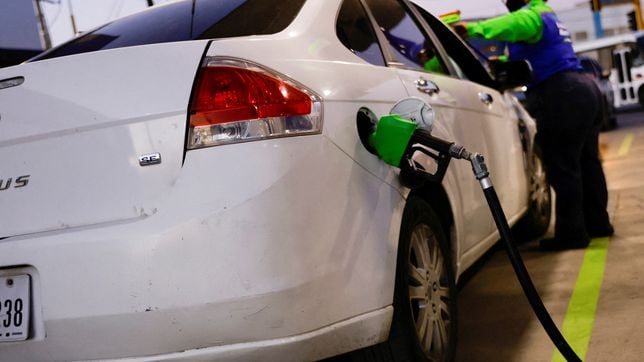Main Topic: U.S. gas prices hit an eight-month high amid rising oil prices.
Key Points:
1. National average price for a gallon of regular unleaded climbed to $3.71, the highest level since November.
2. Gas prices are up by at least $0.15 cents in 16 states in the past week alone.
3. Surge in oil prices, production cuts by OPEC nations, and U.S. refinery outages contribute to the increase in gas prices.
Gas prices in California have risen to $5.26 per gallon, an increase of nearly $0.40 in the past month, and could be further impacted by Tropical Storm Hilary, potentially causing refinery shutdowns and further price increases.
European and U.S. natural gas prices rose due to concerns over supply from Australia and Norway, with maintenance at Norwegian gas fields and fears of a strike at Chevron's LNG facilities driving uncertainty.
Gasoline prices rose 10.6% in August, contributing to the biggest monthly increase in U.S. consumer prices this year, but the overall inflation outlook remains optimistic as gas prices are expected to fall in the coming months. Core inflation, excluding food and energy prices, also increased, but analysts believe it is just a temporary bump and the overall trend is still heading in the right direction.
Gasoline prices in the US have reached a record high for this time of year, posing a challenge to President Joe Biden's fight against inflation.
Gas prices have been rising in the US due to drilling restrictions imposed by OPEC, with California having the highest prices; automotive workers in the US, represented by the UAW union, have initiated a large-scale strike against General Motors, Ford, and Stellantis; President Biden believes that auto companies haven't fairly shared their record profits with workers; Senator Sanders supports the strike as a fight for better conditions for the working class; the Federal Reserve will meet to discuss interest rate changes, with the current rate standing at 5.33 percent.
Gas prices in Los Angeles County have climbed rapidly, with the average price per gallon increasing by nearly 20 cents in just 48 hours due to ongoing refinery issues and unexpected outages.
Gas prices in the US have reached their highest level in 11 months, posing challenges for the Federal Reserve in its campaign to control inflation. Factors contributing to the increase include rising oil prices, production cuts by Saudi Arabia and Russia, reduced refinery production due to hot weather, and low reserves in the Strategic Petroleum Reserve. However, prices are expected to decrease with the switch to a cheaper gasoline blend in the fall and projected global economic slowdown in 2024.
Gas prices in the US have slightly decreased due to the switch to less expensive winter blend gasoline, but the decline is being slowed by higher oil costs, with the potential for prices to spike as oil prices surge. The Federal Reserve is pausing interest rate hikes as inflation, driven by a surge in oil prices, increases, but future rate hikes could impact consumer debt, including car insurance. Some states saw significant shifts in gas prices, with Nevada experiencing the largest increase and California having the highest gas prices in the nation. Shopping for cheaper auto insurance can help lower car ownership costs.
Some gas stations in Southern California are charging nearly $7 per gallon for regular gasoline, the highest in the nation, due to refinery outages and maintenance.
Gas prices in the Los Angeles area have risen, prompting state officials to take action by authorizing the early rollout of winter-blend gasoline to increase fuel supply and alleviate the burden on consumers.
Gas prices in California are increasing, but Governor Gavin Newsom has instructed state regulators to speed up the delivery of cheaper winter blend gas in order to provide financial relief to drivers; the average price of a gallon of self-serve regular gasoline in Los Angeles County has risen for the 23rd time in 25 days, reaching its highest amount since October and prompting Newsom to call for an early transition to winter-blend gasoline.
Gas prices in California, particularly in Los Angeles County, have reached an all-time high, leading inspectors to check local gas stations for price gouging. The state average is $6.07, $2.24 higher than the rest of the country, with LA County prices at $6.31, causing inspectors to ensure that customers are receiving the correct amount of fuel for their payment.
Gasoline prices have increased over time, but when adjusted for inflation and considered in relation to fuel efficiency and real wages, they are only marginally more expensive than in previous years, highlighting the often misleading nature of political rhetoric surrounding gas prices.
Gasoline prices in the United States are expected to continue to decrease despite the Israel-Hamas war, as long as the conflict does not expand geographically, due to seasonal trends and the switch to cheaper winter fuel blends.
Next year, experts predict that prices in California will stabilize, with food and gasoline price increases slowing down, but housing costs potentially climbing more than the average rate of inflation.
